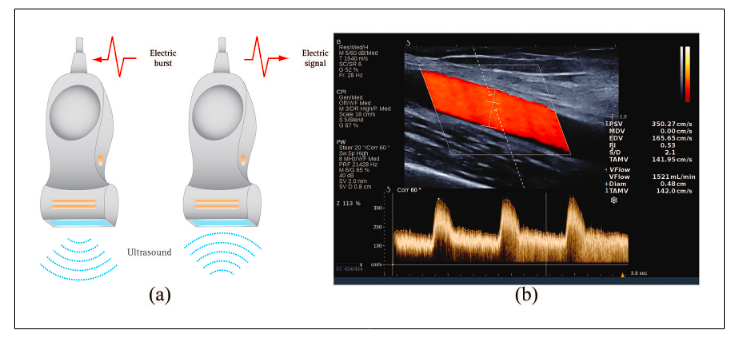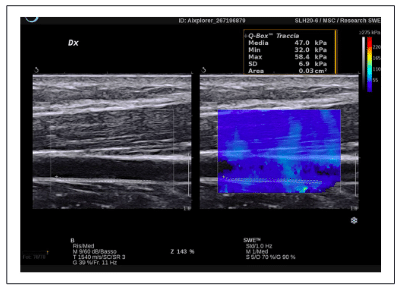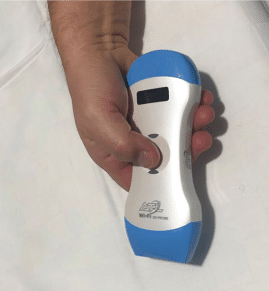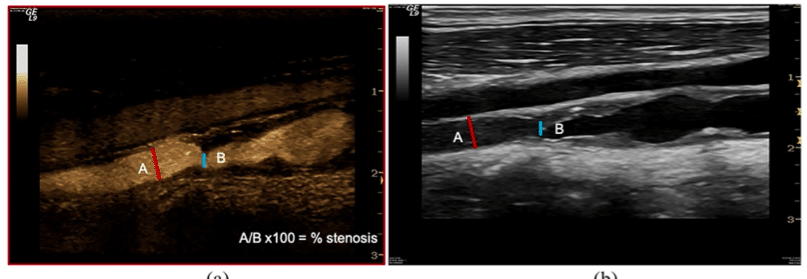Basics for performing a high-quality color Doppler sonography of the vascular access
Mario Meola , Jose Ibeas , Gianfranco Lasalle and Ilaria Petrucci AbstractIn the last years, the systematic use of ultrasound mapping of the upper limb vascular network before the arteriovenous fistula (AVF) implantation, access maturation, and clinical management of late complications is widespread and expanding.Therefore, a good knowledge of theoretical outlines, instrumentation, and operative settings is undoubtedly required for a thorough examination. In this review, the essential Doppler parameters, B-Mode setting, and Doppler applications are considered. Basic concepts on the Doppler shift equation, angle correction, settings on pulse repetition frequency, operative Doppler frequency, gain are reported to ensure adequate and correct sampling of blood
Advances in vascular anatomy and pathophysiology using high resolution and multiparametric sonography
Petrucci Ilaria , Meola Mario and Fiorina Ilaria AbstractB-mode and Color Doppler are the first-line imaging modalities in cardiovascular diseases. However, conventional ultrasound (US) provides a lower spatial and temporal resolution (70–100 frames per second) compared to ultrafast technology which acquires several thousand frames per second. Consequently, the multiparametric ultrafast platforms manage new imaging algorithms as high frequency ultrasound, contrast-enhanced ultrasound, shear wave elastography, vector flow, and local pulse wave imaging. These advances allow better ultrasound performances, more detailed blood flow visualization and vessel walls’ characterization, and many future applications for vascular viscoelastic propertiesevaluation.In this paper, we provide an overview of each
The role of Doppler ultrasonography in vascular access surveillance— controversies continue
Jan Malik, Carlo Lomonte, Mario Meola , Cora de Bont , Robert Shahverdyan, Joris I Rotmans , Francois Saucy, Tamara Jemcov and Jose Ibeas Abstract Chronic hemodialysis therapy required regular entry into the patient’s blood stream with adequate flow. The use of arteriovenous fistulas and grafts is linked with lower morbidity and mortality than the use of catheters. However, these types of accesses are frequently affected by stenoses, which decrease the flow and lead to both inadequate dialysis and access thrombosis. The idea of duplex Doppler ultrasound surveillance is based on the presumption that in-time diagnosis of an asymptomatic significant stenosis and
Current role of ultrasound in hemodialysis access evaluation
Meola Mario , Jose Ibeas and Jan Malik Abstract JVA The Journal of Vascular Access Physical examination (PE) is considered the backbone before vascular access (VA) placement, during maturation period and for follow-up. However, it may be inadequate in identifying suitable vasculature, mainly in comorbid patients, or in detecting complications. This review highlights the advantages of ultrasound imaging to manage VA before placement, during maturation and follow-up. Furthermore, it analyses the future perspectives in evaluating early and late VA complications thank to the availability of multiparametric platforms, point of care of ultrasound, and portable/ wireless systems. Technical improvements and low-cost systems should favor
Ultrasound evaluation of access complications: Thrombosis, aneurysms, pseudoaneurysms and infections
Mario Meola , Antonio Marciello , Gianfranco Di Salle and Ilaria Petrucci Abstract JVA The Journal of Vascular Access Arteriovenous fistula (AVF) complications are classified based on fistula outcomes. This review aims to update colour Doppler (CD) and pulse wave Doppler (PWD) roles in managing early and late complications of the native and prosthetic AVF. Vascular access (VA) failure occurs because inflow or outflow stenosis activates Wirchow’s triad inducing thrombosis. Therefore, the diagnosis of the tributary artery and outgoing vein stenosis will be the first topic considered. Post-implantation complications occur from the inability to achieve AVF maturation and dialysis suitability due to inflow/








